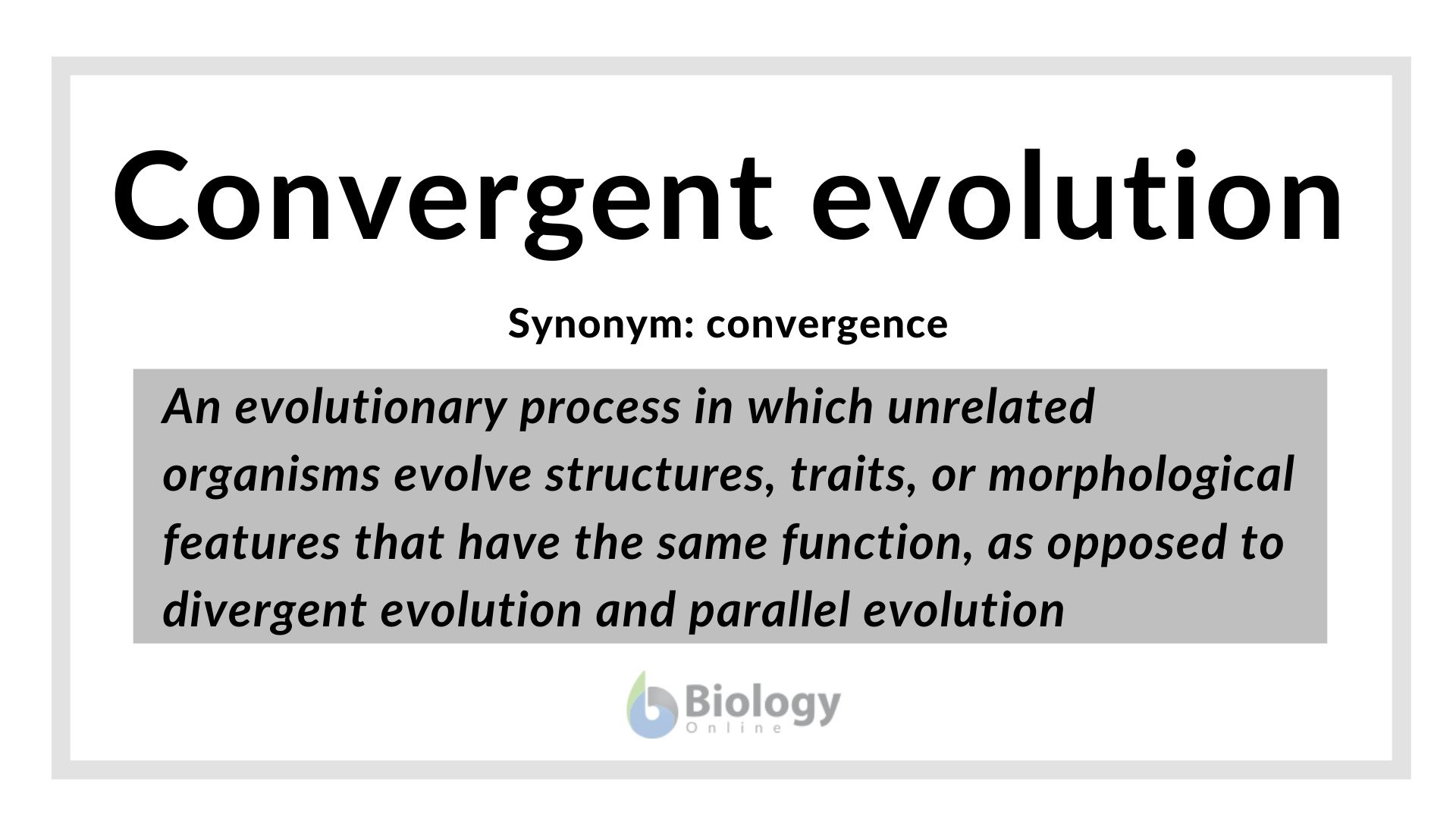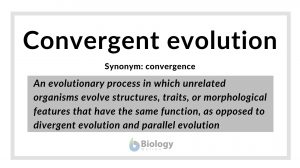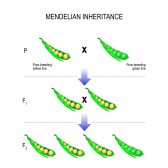
Definition of convergent evolution
Table of Contents
Convergent evolution definition
What is convergent evolution? Convergent evolution is a concept in evolutionary biology that refers to the kind of evolution wherein, for instance, a pair of phylogenetically independent organisms evolve anatomically different structure, trait, or morphological feature that has the same function. The word “analogous” is used to describe such structures of two evolutionary unrelated species and yet they have similar or corresponding functions. Analogous structures do not share the same embryonic origin and they differ anatomically. Thus, they do not denote a common ancestral origin.
Synonym: convergence. Compare: divergent evolution; parallel evolution.
Convergence, homoplasy, and reversal
The acquisition of similar traits by unrelated species as a result of an evolutionary process and not by inheritance from a common ancestor is referred to as homoplasy (also called homoplasty). The species develop such morphological similarities through time despite the differences in phylogenetic origins. One possible cause is that they have been exposed to the same environmental factors and then responding to them through similar adaptive mechanisms. Convergent evolution and parallel evolution can lead to homoplasy. Evolutionary reversal is another related concept. It occurs when a trait shared with the previous ancestor is lost in newer species only to return later in some species. (Ref.1)
Convergent evolution examples
An example of convergent evolution is the wings of the birds, insects, and bats. Their wings may not have the same anatomic composition and features but their wings that serve for one purpose, which is flight. These animals came from different ancestral lines but they eventually evolved wings that they use to travel through the air.
Another example is the eyes of vertebrates, cephalopods, cubozoan jellyfish, and arthropods. These animals evolved separately but they evolved eyes as organs for vision. The organs for smell of unrelated species are also analogous structures. For example, the smelling organs of the terrestrial coconut crab are similar in function to the sensilla of insects. Their organs are capable of detecting smells in the air.
The shells of brachiopods resemble those of distantly related bivalve mollusks. Marine animals (such as ichthyosaurs, fish, and dolphins) have a streamlined body plan that helps them swim more efficiently in seas and oceans. The Antarctic toothfish and the Arctic cod are capable of withstanding extremely low temperature because they possess a gene that encodes for a protein coupled with sugar to form an “antifreeze” biological compound. The gene responsible for the production of antifreeze glycoproteins is believed to have originated from an ancient gene that formerly had a role in digestion. (Ref.2)
Fruitafossor (Late Jurassic termite-eating extinct mammal) resembles the anteaters and pangolins. They have features (e.g. long sticky tongues) that enable myrmecophagy (feeding on ants or termites). Skeletal features indicate that they are not related.
Mimicry is one of the defense strategies not uncommon among animals. There are two forms of mimicry, i.e. Mullerian vs Batesian. Mullerian mimicry is one in which the animals seem to “copy” each other morphologically. In Batesian mimicry, a not-so-harmful animal mimics a harmful animal. An example of mimicry is the black and yellow sand lizard (Heliobolus lugubris) that mimics a ground beetle Anthia sp. The latter is considered as unpalatable by its predators because it sprays formic acid as its defense. The lizard, which is not toxic and does not have such a defense mechanism, mimics the beetle to deceive its predators.
Convergent evolution is seen not just in the animal kingdom. It is also seen in plants. Analogous structures, such as prickles, thorns, and spines, evolve as a plant adaptation against excessive herbivory.
Convergent vs parallel evolution
Convergent evolution and parallel evolution are similar in a way that both result in the evolution of unrelated species with similar structures. However, in parallel evolution, this occurs when the species live in the same environment. They tend to evolve parallel to each other in the same environment or current situation. In convergent evolution, the species do not live in the same environment although they may be exposed to similar environmental pressures that led them into developing similar adaptive strategies. Parallel evolution is displayed by the North American cactus and the African euphorbia from two different plant families. Both of them live in hot arid habitats and to adapt both of them evolved thicker stems and sharp quills.
Convergent vs.divergent evolution
When an evolutionary process results in species diverging rather than converging through time it is called divergent evolution. Species from a common lineage eventually diverged from its ancestor. As it evolves structure with a novel function, it became more and more dissimilar from its ancestors. Darwin finches, for instance, define such an evolution. While some finches evolved claw-like beaks, other finches evolved thin, longer beaks that are better suited in poking into holes in the ground and extract the grubs. Another example is the evolution of bat forelimbs. Bat has the same anatomic forelimb features as that of other mammals, i.e. the forelimb being made up of radius and ulna. However, the bat forelimbs eventually acquired wing membranes (patagia) that enabled bats to “fly” (glide). Such structures with novel functions yet from the same embryonic (developmental) origin are described as homologous (as opposed to the analogous structures in convergent evolution). Possible causes of divergent evolution are migration, interbreeding, and exposure to new environmental pressures. Going back again to Darwin’s finches as an example, the species migrated to new habitats and over time, they evolved to become more fit to their environment by natural selection. This is called adaptive radiation. (Ref.3)

See also
References
- Exploring the KU Natural History Museum Convergent Evolution. (n.d.). Retrieved from https://biodiversity.ku.edu/sites/all/themes/bootstrap/bootstrap_biotheme/img/public_html/sites/all/themes/bootstrap/bootstrap_biotheme/img/photos/schools/pdfs/Convergent_Evolution.pdf
- No ice in their veins. (2020). Berkeley.Edu. https://evolution.berkeley.edu/evolibrary/article/fishtree_06
- Biology Online Editors. (2020, January 31). Adaptive Radiation – Biology Online Tutorial. Biology Articles, Tutorials & Dictionary Online. https://www.biologyonline.com/tutorials/adaptive-radiation
©BiologyOnline. Content provided and moderated by BiologyOnline Editors.







